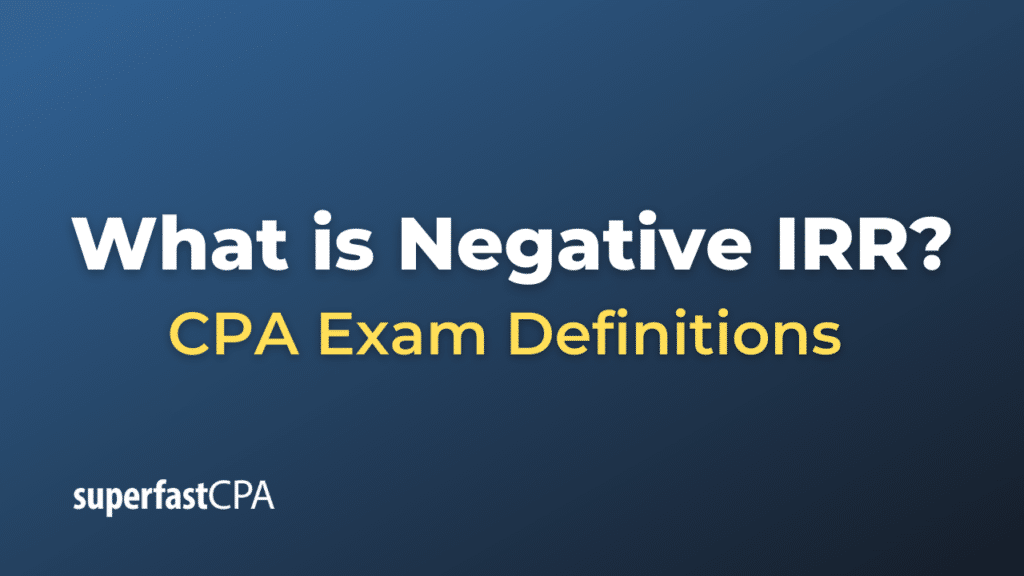Negative IRR
The Internal Rate of Return (IRR) is a metric used in capital budgeting to estimate the profitability of potential investments. IRR is the discount rate that makes the net present value (NPV) of all cash flows (both inflow and outflow) from a particular project or investment equal to zero.
A negative IRR occurs when the present value of the expected cash outflows (costs, expenses) exceeds the present value of the expected cash inflows (returns, revenue) over the investment horizon. Simply put, a negative IRR indicates a projected loss on the investment.
For example, if a project has an initial outlay (an outgoing cash flow) of $1,000 and is only expected to generate total incoming cash flows of $900 over its lifetime, the project would have a negative IRR, signifying that it is expected to result in a net loss.
It’s important to note that the IRR should not be the sole determinant of an investment decision. Other factors such as risk, strategic considerations, the overall impact on the company’s operations, and other financial metrics should also be considered.
Example of Negative IRR
Suppose a company is considering investing in a project that requires an initial investment of $500,000. The company anticipates that the project will generate cash inflows of $100,000 per year for the next five years.
Here, we notice that the total cash inflow over the five years will be $500,000 ($100,000 * 5), which equals the initial investment. In this case, the IRR is 0% – there’s neither gain nor loss.
Now, let’s consider a different scenario. The same project requires an initial investment of $500,000, but this time, it will generate only $80,000 per year for the next five years. The total cash inflow over five years will be $400,000 ($80,000 * 5), which is less than the initial investment.
In this case, the project will have a negative IRR, indicating a loss on the project over the five-year period. The precise IRR value would depend on the exact timing of the cash inflows, but it would be negative because the present value of the inflows is less than the outflows.
Remember, this is a simplified example and actual investment decisions would take into account more factors, including the time value of money, the firm’s cost of capital, other potential investment opportunities, and risks associated with the project.













